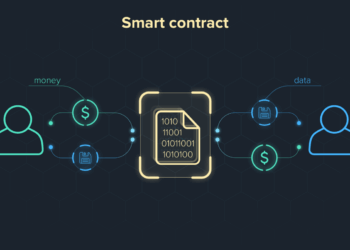In an increasingly complex and demanding world, simply having a basic planner is no longer sufficient. While a rudimentary calendar or a simple to-do list can help track appointments and tasks, they often fall short in providing the comprehensive framework needed to manage the intricate web of professional projects, personal goals, and everyday responsibilities. The modern individual, whether a busy professional, an ambitious student, or a dedicated parent, faces a continuous deluge of commitments that require more than just basic scheduling.
The concept of moving beyond your basic planner is about transforming your approach to time management from a reactive act of recording to a proactive strategy of designing your life. It’s about recognizing that effective planning is not just about what you do, but how you plan to do it, why it matters, and *how it aligns with your broader aspirations. This advanced perspective empowers you to move past merely surviving your schedule to truly thriving within it.
This comprehensive guide will explore the limitations of traditional planning tools and introduce you to a suite of advanced methodologies, systems, and mindsets that can elevate your productivity, enhance your focus, and bring greater clarity to your life. We will delve into strategic planning frameworks, digital integration, and psychological principles that turn your planner into a powerful engine for achieving your most ambitious goals. By the end of this article, you will possess the insights and tools to design a planning system that is robust, flexible, and perfectly tailored to your unique needs.
The Limitations of Conventional Planning
![]()
Before we delve into advanced strategies, let’s understand why many basic planners often fall short. Their simplicity, while sometimes appealing, often leaves crucial gaps in our ability to manage a truly complex life.
A. Lack of Context and Prioritization
A basic planner often treats all entries equally – a dentist appointment carries the same visual weight as a critical project deadline. This lack of inherent hierarchy makes it difficult to discern what truly matters and leads to decision fatigue. Without a system for prioritization, we often tackle the easiest tasks rather than the most impactful.
B. Static and Unflexible
Paper planners, once filled, are difficult to modify. Digital planners can be more flexible, but if not set up correctly, they can still become rigid. Life is dynamic, and a planning system that cannot adapt to unexpected changes quickly becomes obsolete and frustrating.
C. Disconnect from Goals and Values
Many basic planners are just glorified task lists. They don’t integrate with long-term goals, personal values, or overarching projects. This creates a disconnect where daily tasks feel meaningless, leading to a lack of motivation and a sense that you’re just spinning your wheels.
D. Inadequate for Complex Projects
For multi-step projects with interdependencies and deadlines, a simple calendar entry or a single line on a to-do list is insufficient. Basic planners lack the structure to break down large initiatives into manageable steps, track progress, or identify potential bottlenecks.
The Core Principles of Advanced Planning
Moving beyond basic planning requires adopting a new mindset and incorporating several key principles into your system. These principles transform your planner from a passive record-keeper into an active strategy tool.
A. Goal-Oriented Planning
Every task you schedule should ideally connect to a larger goal. Your planning system should provide a clear line of sight from your daily actions to your weekly, monthly, quarterly, and annual objectives. This ensures that your efforts are always purposeful and aligned with what truly matters.
B. Contextual Organization
Tasks are not all created equal, nor are they all performed in the same environment. An advanced planner organizes tasks by their context (e.g., “at work,” “at home,” “on the phone,” “online”). This allows you to efficiently group similar tasks and complete them when you are in the appropriate environment, minimizing wasted time and mental energy.
C. Strategic Prioritization
Not everything can be a top priority. A robust planning system incorporates techniques to identify the most impactful tasks (often using frameworks like the Eisenhower Matrix or the ABCDE Method) and ensures they receive your focus before less critical items. This is about working smarter, not just harder.
D. Regular Review and Reflection
An advanced planner is a dynamic tool that requires constant recalibration. Regular daily, weekly, and monthly reviews are essential to assess progress, adapt to changes, and refine your approach. This reflective practice is crucial for continuous improvement and maintaining alignment with your goals.
Building Your Advanced Planning System
This methodology combines various best practices to create a comprehensive, robust, and flexible planning framework.
A. Define Your Vision and Goals (Long-Term Planning)
Before you plan your day, you need to know what you’re ultimately aiming for.
- A. Identify Core Values: What principles guide your life? (e.g., family, growth, creativity).
- B. Set Long-Term Goals (1-5 years): What do you want to achieve in various areas of your life (e.g., career, health, relationships, learning)? Make them SMART (Specific, Measurable, Achievable, Relevant, Time-bound).
- C. Break Down into Annual Goals: Translate your long-term goals into specific objectives for the current year.
- D. Establish Quarterly Rocks/Objectives: Further break down annual goals into 3-5 major objectives (often called “rocks”) for each quarter.
Your advanced planner should have dedicated sections for these overarching goals, acting as your North Star.
B. Strategic Weekly Planning
This is where the rubber meets the road. Your weekly plan acts as a bridge between your long-term goals and your daily actions.
- A. Review Last Week’s Progress: What did you accomplish? What fell short? Why?
- B. Identify Your Top 3-5 Priorities for the Week: Based on your quarterly rocks, what are the most critical tasks that MUST get done this week?
- C. Schedule Your “Big Rocks” First: Block out specific time slots in your calendar for these high-priority items. Treat them as non-negotiable appointments.
- D. Batch Similar Tasks: Group together phone calls, emails, administrative tasks, and errands to be done at specific times.
- E. Integrate Personal Commitments: Include appointments, family time, workouts, and self-care activities. A truly advanced planner integrates all aspects of your life.
C. Effective Daily Planning and Execution
Your daily plan is about executing your weekly strategy.
- A. Daily “Power Hour” or “Morning Review”: Start each day with a 10-15 minute review of your weekly plan and calendar.
- B. Identify Your Daily Top 3 Tasks: What are the three most important things you need to achieve today? Focus on these first.
- C. Time-Block Your Day: Schedule specific blocks of time for focused work on your top priorities, meetings, and other tasks.
- D. Use the Two-Minute Rule: If a task takes less than two minutes, do it immediately to prevent it from cluttering your list.
- E. Capture New Tasks Immediately: Have a system (digital or physical inbox) to quickly capture new ideas, tasks, or commitments as they arise, then process them later.
D. Leverage the Right Tools and Integrations
The choice of tools significantly impacts the effectiveness of your system.
- A. Integrated Digital Ecosystem:
- Calendar: (Google Calendar, Outlook Calendar, Apple Calendar) as your central hub for time-blocking and appointments, ideally synced across all devices
- Task Manager: (Todoist, TickTick, Asana, Microsoft To Do) for managing daily tasks, recurring items, and project breakdowns. These should integrate with your calendar.
- Note-Taking App: (Evernote, Notion, Obsidian, OneNote) for capturing ideas, meeting notes, project plans, and long-term research.
- B. Physical Planner (Optional but Powerful): Many find value in a physical planner (e.g., Hobonichi, Bullet Journal, Passion Planner) for the tactile experience of daily planning, brainstorming, and reflection, even if the main system is digital.
- C. Automation Tools: (Zapier, IFTTT) to connect different apps and automate repetitive tasks, such as turning an emailed task into a task list item.
Advanced Methodologies and Psychological Enhancements

To truly go beyond basic planning, incorporate established methodologies and psychological insights.
A. The “Getting Things Done” (GTD) Methodology
Developed by David Allen, GTD is a comprehensive system for organizing and tracking tasks. Key tenets include:
- A. Capture: Get everything out of your head.
- B. Clarify: Define what each item means and what action is required.
- C. Organize: Put it in the right place (e.g., project list, next actions list, waiting for list).
- D. Reflect: Review your lists regularly.
- E. Engage: Do the work.
GTD is excellent for managing large volumes of information and tasks across various projects and contexts.
B. The Pomodoro Technique
This time management method uses a timer to break down work into intervals, traditionally 25 minutes in length, separated by short breaks. This enhances focus and prevents burnout, especially for deep work sessions scheduled in your advanced planner.
C. The Eisenhower Matrix
A prioritization tool that categorizes tasks based on two criteria: urgency and importance.
- A. Urgent & Important (Do First): Crises, deadlines.
- B. Important, Not Urgent (Schedule): Planning, relationship building, prevention. This is where most strategic work happens.
- C. Urgent, Not Important (Delegate): Interruptions, some emails, certain meetings.
- D. Not Urgent & Not Important (Eliminate): Distractions, time-wasters.
D. Mindfulness and Flexibility
While structure is key, an advanced planner also embraces flexibility. Life happens. Don’t let your planner become another source of stress if things don’t go exactly as planned. Be mindful, adjust, and learn from deviations. The goal is flow, not rigid control.
E. Incorporate Review Loops
Beyond daily and weekly reviews, schedule quarterly and annual reviews. These longer-term reflections allow you to assess your progress against larger goals, make significant adjustments to your strategy, and ensure your planning system remains aligned with your evolving aspirations. This meta-planning is what truly sets advanced users apart.
Conclusion
The journey to move beyond your basic planner is a testament to the idea that true productivity isn’t about doing more, but about doing what matters most, with intention and clarity. A simple list or calendar, while a starting point, is ultimately a reactive tool. By embracing the principles and strategies of advanced planning, you transform your approach to time management into a proactive, strategic art form. You move from merely tracking your days to consciously designing your life.
This comprehensive system, rooted in goal-oriented thinking, contextual organization, and strategic prioritization, empowers you to create a framework that is not just about managing tasks but about realizing your full potential. It integrates your long-term vision with your daily actions, ensuring that every minute spent is a step towards a meaningful objective. The mental clarity gained from such a structured yet flexible approach reduces overwhelm, minimizes decision fatigue, and liberates valuable cognitive energy that can be channeled into creative problem-solving and deep, impactful work.
Furthermore, by incorporating regular review and reflection, your advanced planning system becomes a living, evolving entity. It adapts to the ever-changing demands of life, allowing for continuous refinement and growth. The blend of digital efficiency and, for some, the tactile satisfaction of a physical planner, creates a personalized synergy that maximizes both productivity and personal satisfaction. Ultimately, going beyond a basic planner is about investing in yourself – in your peace of mind, your capacity for achievement, and your ability to craft a life that is truly aligned with your deepest values and aspirations. It is an invitation to move from merely being busy to being profoundly effective, unlocking a future where your plans don’t just happen, but are meticulously and purposefully brought to life.












